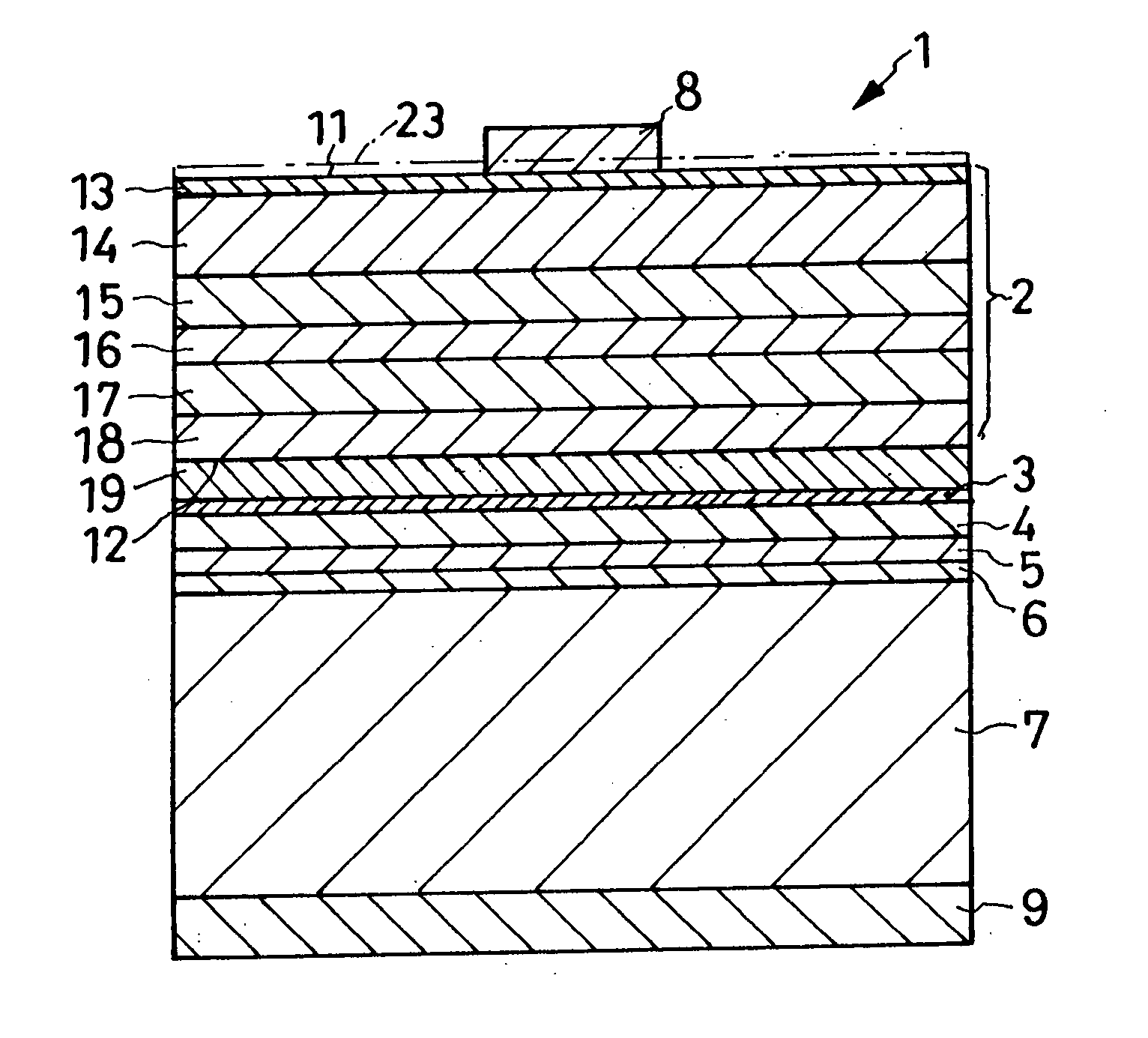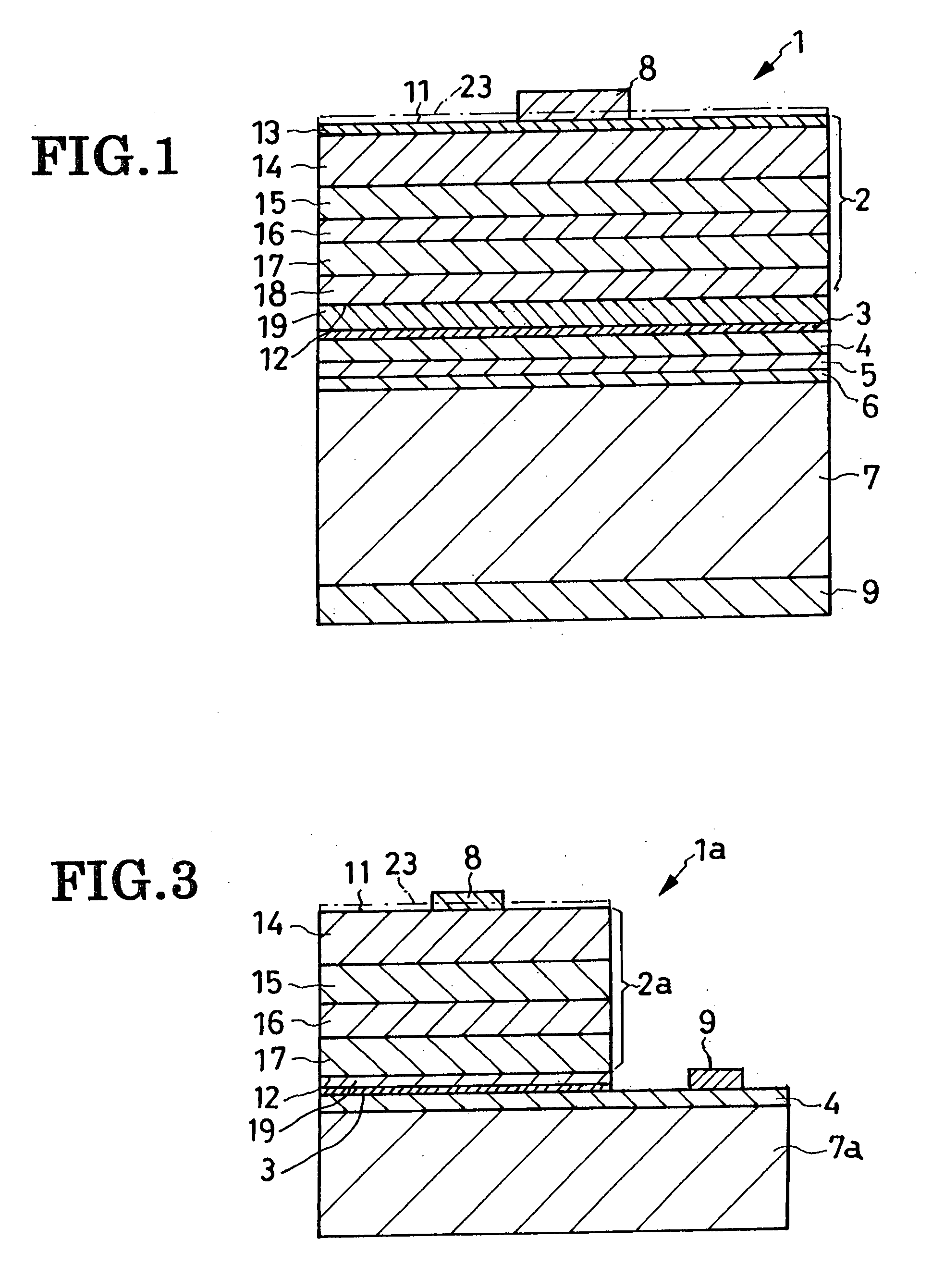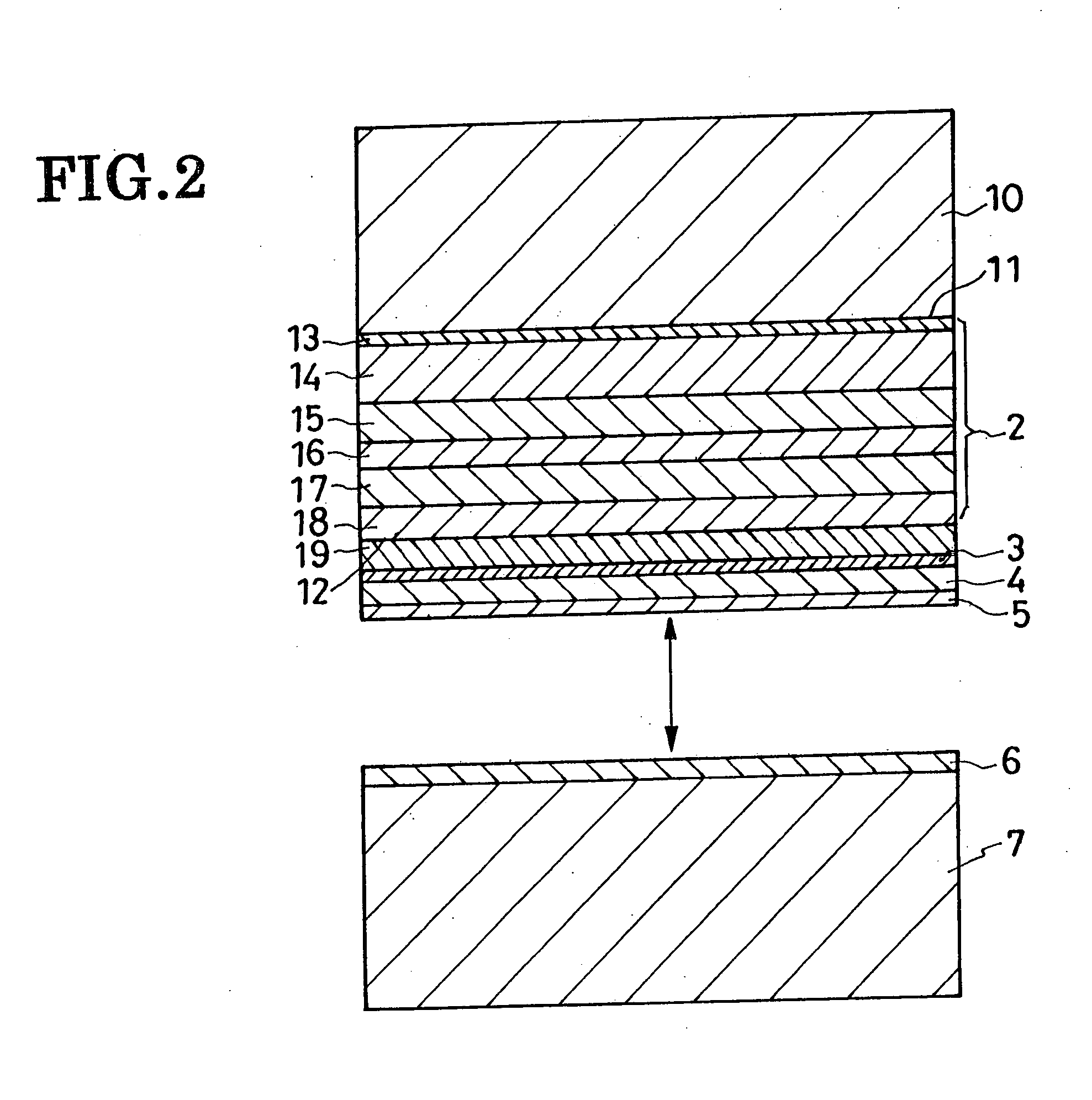Light-emitting semiconductor device and method of fabrication
- Summary
- Abstract
- Description
- Claims
- Application Information
AI Technical Summary
Benefits of technology
Problems solved by technology
Method used
Image
Examples
embodiment
of FIG. 3
[0071]FIG. 3 illustrates another preferred form of LED 1a according to the invention, which differs from its FIG. 1 counterpart in having a modified semiconductor region 2a, modified baseplate 7a, and modified positioning of the anode 9. The modified semiconductor region 2a is akin to its FIG. 1 equivalent 2 except for the absence of the first and third complementary layers 13 and 18. The cathode 8 is therefore mounted on the surface 11 of the n-type complementary layer 14, which might be more aptly termed the current spreading layer in this alternate embodiment of the invention. Further, as the third complementary layer 18 is absent, the ohmic contact layer 19 makes ohmic contact with the p-type semiconductor region 17.
[0072] It will be further observed from FIG. 3 that the modified baseplate 7a and the reflective layer 4 thereon have portions projecting laterally beyond the overlying semiconductor region 2a. The anode 9 is placed on the ledge thus formed by the baseplate...
PUM
 Login to View More
Login to View More Abstract
Description
Claims
Application Information
 Login to View More
Login to View More - R&D
- Intellectual Property
- Life Sciences
- Materials
- Tech Scout
- Unparalleled Data Quality
- Higher Quality Content
- 60% Fewer Hallucinations
Browse by: Latest US Patents, China's latest patents, Technical Efficacy Thesaurus, Application Domain, Technology Topic, Popular Technical Reports.
© 2025 PatSnap. All rights reserved.Legal|Privacy policy|Modern Slavery Act Transparency Statement|Sitemap|About US| Contact US: help@patsnap.com



